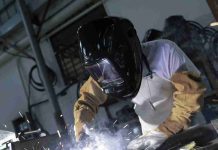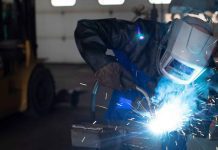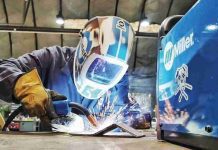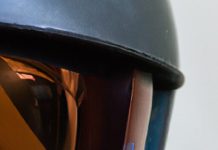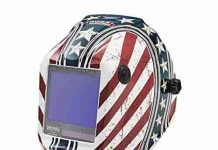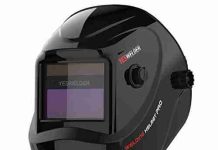Have you ever wondered what shade is best for welding? Well, look no further! We have the answers you’ve been searching for. In this article, we are going to explore the different shades available for welding and help you determine which one is the most suitable for your needs. Whether you’re a professional welder or just starting out, knowing the right shade can make a world of difference in ensuring your safety and achieving optimal results. So, let’s shed some light on the best shade for welding and get ready to ignite your passion for this powerful craft!
Factors to Consider
When it comes to welding, choosing the right shade is crucial for ensuring safety and achieving optimal visibility. There are several factors that need to be taken into consideration when selecting the best shade for welding.
Type of Welding Process
The type of welding process being used plays a significant role in determining the appropriate shade. Different processes produce varying levels of brightness and intensity, so it is important to choose a shade that can effectively protect the eyes from the specific hazards associated with each process.
Amperage of the Welding Machine
The amperage of the welding machine also impacts the selection of the shade. Higher amperage levels generate brighter arcs, which require a darker shade to protect the eyes effectively. Conversely, lower amperage levels necessitate a lighter shade for optimal visibility.
Material Being Welded
The material being welded is another crucial factor to consider. Certain materials produce more intense and bright arcs, requiring a darker shade for protection. On the other hand, lighter materials may require a lighter shade to maintain visibility and prevent eye strain.
Environmental Conditions
The environmental conditions in which welding takes place should not be overlooked when choosing the right shade. Factors such as natural lighting, artificial lighting, and the presence of reflective surfaces can all affect the perception of the welding arc. It is important to select a shade that compensates for these conditions to ensure clear visibility and eye protection.
Personal Preference
Personal preference also plays a role in shade selection. Some welders may find certain shades more comfortable or easier to work with based on their experience and individual needs. While personal preferences should be considered, safety and visibility should always be the top priorities.
Choosing the Right Shade
There are various shade options available, each designed for specific welding processes, amperage levels, materials, and environmental conditions. Here are some guidelines to help choose the right shade for different considerations:
Shade Selection Chart
A shade selection chart is a useful tool that outlines the recommended shades based on different factors such as welding process, amperage, material, and environmental conditions. It provides a quick reference guide to assist in making an informed decision.
Recommended Shades for Different Welding Processes
For arc welding, a shade of 10 to 14 is typically recommended, with lower shades for lower amperage and higher shades for higher amperage. For MIG welding, a shade of 10 to 13 is commonly recommended, while TIG welding may require a shade as low as 8 to 13. Plasma cutting usually requires a shade of 6 to 8.
Recommended Shades Based on Amperage
When it comes to amperage, lower levels (less than 60) generally require a shade of 9 to 10, medium levels (60-160) may necessitate a shade of 10 to 12, and higher levels (over 160) may require a shade as dark as 12 to 14.
Recommended Shades Based on Material
The material being welded also influences the shade selection. Light materials such as aluminum generally require a shade of 9 to 10, while medium materials like carbon steel may call for a shade of 10 to 11. For heavy-duty materials such as stainless steel, a shade of 11 to 13 is typically recommended.
Recommended Shades Based on Environmental Conditions
Environmental conditions should be taken into account to ensure optimal visibility and eye protection. For indoor welding, a shade of 10 to 12 is usually suitable. Outdoor welding under bright sunlight may necessitate a shade as high as 13 to 14. In low-light environments, a shade of 8 to 10 is often recommended.
Benefits of Using the Correct Shade
Using the correct shade for welding offers numerous benefits, ensuring safety, preventing eye fatigue, and improving visibility.
Ensuring Safety
The primary purpose of using the correct shade is to protect the eyes from the harmful effects of intense light and radiation produced during welding. Adequate eye protection reduces the risk of eye injuries, including arc eye or arc flash, which can cause pain, sensitivity to light, tearing, and temporary vision loss.
Preventing Eye Fatigue
Welding for extended periods can cause eye fatigue, leading to discomfort and reduced productivity. By using the correct shade, eye strain is minimized, allowing welders to work more comfortably and efficiently without experiencing excessive eye fatigue.
Improving Visibility
The correct shade not only provides protection but also enhances visibility. By reducing the intensity of the welding arc, the right shade allows welders to see their workpiece more clearly. This improved visibility enables better control over the welding process, leading to improved accuracy and weld quality.
Common Shade Options
Shade options for welding typically range from 10 to 14, with each shade offering different levels of protection and visibility.
Shade 10
Shade 10 is a commonly used shade for various welding processes, offering moderate protection and visibility. It is suitable for low to medium amperage levels and light to medium materials.
Shade 11
Shade 11 provides slightly darker protection compared to shade 10. It is suitable for higher amperage levels, heavier materials, and processes that emit brighter arcs.
Shade 12
Shade 12 offers even darker protection, making it suitable for high amperage levels, heavy-duty materials, and welding processes that generate intense brightness.
Shade 13
Shade 13 is one of the darkest shades available and is typically reserved for extremely high amperage levels and processes that produce exceptionally bright arcs. It is often recommended for specialized welding applications.
Shade 14
Shade 14 is the darkest shade available and provides maximum protection. It is primarily used in applications where the welding arc is extremely bright and intense, such as high-amperage TIG welding or plasma cutting.
Factors Affecting Shade Selection
Several factors impact the selection of the appropriate shade for welding. Consider the following factors when choosing the best shade for your specific needs:
Welding Process
Different welding processes emit varying levels of brightness and intensity. The welding process being used will determine the optimum shade that provides the necessary protection while maintaining good visibility.
Amperage
The amperage level of the welding machine affects the brightness of the arc. Higher amperage levels result in brighter arcs that require darker shades for adequate eye protection.
Material
The material being welded can also influence the shade selection. Certain materials produce more intense arcs, necessitating darker shades for protection. Lighter materials may require lighter shades to maintain optimal visibility.
Environmental Conditions
The conditions in which welding takes place, such as natural or artificial lighting and the presence of reflective surfaces, can impact the perception of the welding arc. It is essential to choose a shade that compensates for these environmental conditions to ensure clear visibility and eye protection.
Choosing the Best Shade for Different Welding Processes
Different welding processes have unique requirements when it comes to selecting the best shade.
Arc Welding
For arc welding, shades ranging from 10 to 14 are typically recommended. Lower shades are suitable for lower amperage levels, while higher shades are necessary for higher amperage levels. The specific shade selection will depend on the amperage, material, and environmental conditions.
MIG Welding
MIG welding usually requires a shade within the range of 10 to 13. The specific shade depends on the amperage, material, and environmental conditions. Higher amperage levels and brighter arcs may require darker shades, while lower amperage levels and lighter materials may call for lighter shades.
TIG Welding
TIG welding typically requires slightly lower shades compared to arc and MIG welding. Shades ranging from 8 to 13 are commonly recommended. As with other processes, the specific shade selection will depend on factors such as amperage, material, and environmental conditions.
Plasma Cutting
Plasma cutting involves extremely intense arcs, requiring darker shades for optimal eye protection. Shades ranging from 6 to 8 are typically recommended for plasma cutting. Again, the specific shade selection may be influenced by factors such as amperage, material, and environmental conditions.
Choosing the Best Shade Based on Amperage
Amperage levels significantly impact the shade selection process. Consider the following guidelines when choosing the best shade based on amperage:
Low Amperage (Less than 60)
For low amperage levels, a shade of 9 to 10 is generally suitable. However, other factors such as the welding process, material, and environmental conditions should still be considered.
Medium Amperage (60-160)
Medium amperage levels may require a shade of 10 to 12. Again, it is crucial to consider other factors to determine the most appropriate shade.
High Amperage (Over 160)
For high amperage levels, a darker shade of 12 to 14 may be necessary. It is important to prioritize eye protection when working with high amperage and intense arcs.
Choosing the Best Shade Based on Material
Different materials emit varying levels of brightness during the welding process. Consider the following recommendations for shade selection based on the material being welded:
Light Materials
Light materials such as aluminum typically require a shade of 9 to 10 to protect the eyes adequately while maintaining visibility.
Medium Materials
Medium materials, such as carbon steel, generally call for a shade of 10 to 11. This shade range offers the right balance between protection and visibility.
Heavy-Duty Materials
When welding heavy-duty materials like stainless steel, a shade of 11 to 13 is typically recommended. These materials produce more intense arcs that require a darker shade for optimal eye protection.
Choosing the Best Shade Based on Environmental Conditions
Environmental conditions can impact the perception of the welding arc and the effectiveness of the selected shade. Consider the following recommendations for choosing the best shade based on environmental conditions:
Indoor Welding
For welding in indoor environments with controlled lighting, a shade of 10 to 12 is usually sufficient. However, factors such as amperage, material, and the presence of reflective surfaces should also be taken into consideration.
Outdoor Welding
Outdoor welding under bright sunlight may require a higher shade of 13 to 14 to compensate for the increased brightness. Welders should prioritize eye protection and visibility when working in outdoor environments.
Bright Environments
In environments with high levels of ambient light or reflective surfaces, a shade at the higher end of the recommended range may be necessary to counteract the increased brightness and ensure clear visibility.
Low-Light Environments
In low-light environments, such as welding in dimly lit areas, a lighter shade ranging from 8 to 10 is often recommended. This shade range helps to enhance visibility while still providing adequate protection.
Conclusion
Selecting the right shade for welding is essential for both safety and visibility. Factors such as the welding process, amperage, material, environmental conditions, and personal preferences should all be considered when choosing the best shade. By understanding these factors and following the recommended guidelines, welders can ensure optimal eye protection, prevent eye fatigue, and improve their overall welding experience. Remember to prioritize safety and never compromise on eye protection when selecting a shade for welding.



